#great bardfield
Explore tagged Tumblr posts
Text
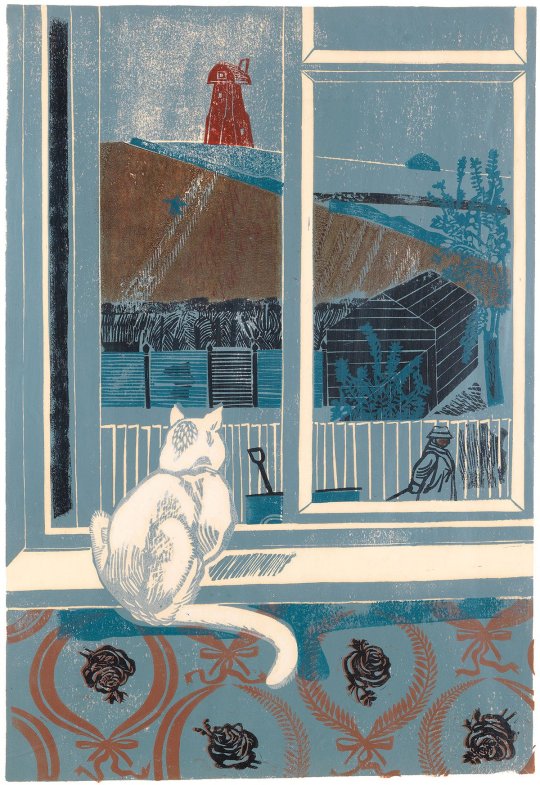
Sheila Robinson "Great Bardfield Windmill"
55 notes
·
View notes
Text

The Attic Bedroom at Brick House, Eric Ravilious, 1932. This was painted at Great Bardfield in Essex.
12 notes
·
View notes
Text

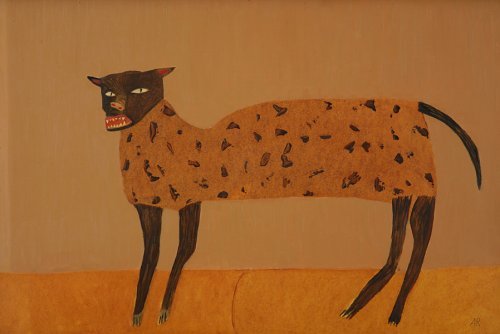



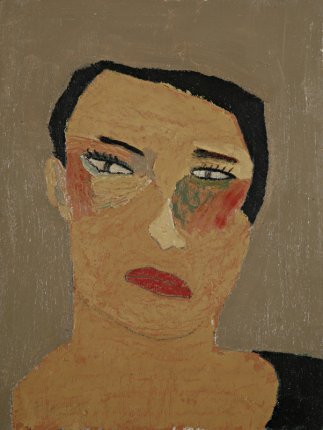


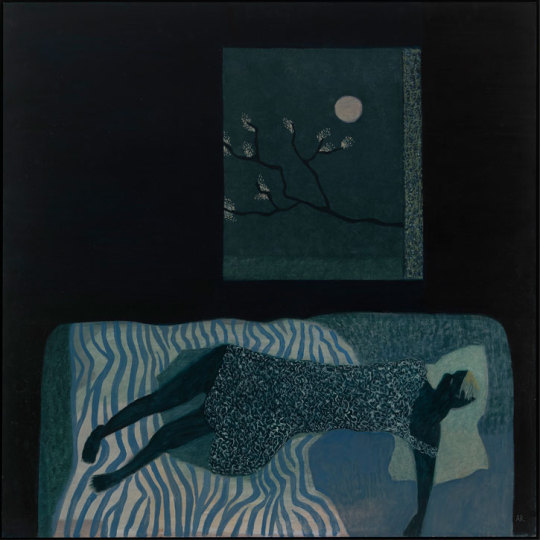
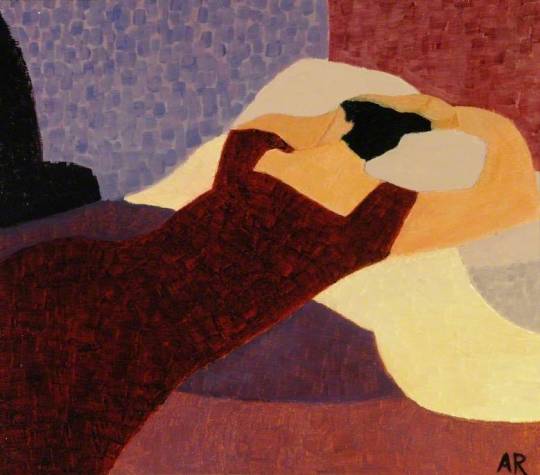
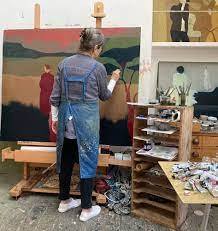

Anne Rothenstein is self-taught artist who lives and works in London. Born in 1949, the daughter of the late Michael Rothenstein and Duffy Ayres, she grew up in a lively and distinguished community of artists in the Essex village of Great Bardfield. Following a foundation course at Camberwell School of Art in the mid-1960s, Rothenstein worked as an actress for over a decade before gradually returning to painting.
"Interviewer: You come from an incredibly artistic family, your mother was Duffy Ayres, your father Michael Rothenstein, and your grandfather was the Royal College of Art principal Sir William Rothenstein. What was it like growing up in that world?
Anne R: Until I was 7, I grew up in a small village called Great Bardfield. It was full of artists, for example Edward Bawden lived across the road, and Eric Ravilious also lived there before the War. The weird thing was, although the place was shaped by artists, that community was deeply conventional. It wasn't a bohemian village, which is how some people imagine it. It was just quite normal. I also didn't know any different.
As a child, I was never dragged to art exhibitions or anything like that. In those days, children were sort of excluded, we were a nuisance. As a very young child, I spent most of my time alone. I lived in my own world at the bottom of the garden. I painted, drew and wrote all day long. Of course there were always materials all around me to do things like that, and in those times we didn't have television. It would be unusual to get through the day without producing or creating something.
My main love is Outsider Art, which is perhaps a reflection of how much of an outsider I've always felt (even though you could say I was born inside). Artists like Malevich and Natalia Goncharova have always interested me... and I've been very moved by the paintings of Gwen John. I wouldn't say that I reference her stylistically, though she also painted many solitary figures. I love early David Hockney, especially his etchings and drawings. Milton Avery has always been an influence. Over the past ten years I have been incredibly inspired by contemporary art and artists, names like Mamma Anderson, Rose Wylie, Kiki Smith, Noah Davis, Kerry James Marshall. I had a visceral reaction to the works of Bill Traylor, the African American folk artist."
https://artuk.org/.../seven-questions-with-anne-rothenstein
18 notes
·
View notes
Text
Here are the artists I chose:
Geoffrey Hamilton Rhoades

Rhoades: Geoffrey Hamilton Rhoades self-portrait woodcut 1941
1898
Born in London. Educated at Dulwich College
1915 – 17
Studied at Clapham Art School
1917 – 19
Served in the Mercantile Marine as a wireless operator
1919 – 23
Student at the Slade School under Professor Tonks
1925 – 27
Lived and worked at Stoke Rochford House, Lincolnshire. Completed several
murals as well as portraits, landscapes and drawings
1929
Introduced to the Rothenstein family and became a particular friend of Michael
1928 – 36
Teacher at the Working Man’s College, Crowndale Road, Camden Town, London
1934
Married Joan Jenner
1930 – 45
Art Master at Bishop’s Stortford College
1938
Birth of son, Peter
1939 – 45
Association with the Great Bardfield group of artists, Bawden, Ravilious, etc.
1953 – 72
Tutor at the Ruskin School of Art, University of Oxford
1960’s
Teacher of art therapy classes at St John’s Hospital, Stone, Buckinghamshire
1980
Death from cancer
0 notes
Text
Artist Research - artist 1
Chloë Cheese
She is a British artist born in 1952, where she spent the majority of her childhood in southern London observing her parents create art as they were artists and printmakers themselves, so she had been surrounded by art from a young and impressionable age.

Her work often consists of paintings and prints of indoor still lifes which are influenced by her interests in domestic interiors. Additionally, she enjoys ephemeral objects such as fluorescent plastic spoons, a tin can, a bus ticket or her mum's broken ceramics collection.



What attracted me to her work was the simplicity of such a large interior space being framed into a still life which only shows the viewer what Cheese was intrigued by at the time. Her interests that are captured in her work are simple yet they hold a hefty meaning as this shows us what she enjoys as a person which I wanted to incorporate in my own project.
0 notes
Text
Leather Repairs Bardfield Saling - on-site repairs for leather
At Leather Repairs Bardfield Saling, we offer more than just repairs for leather that is scratched or torn. Let us lengthen the life of your leather and give it a fresh new look with our range of leather care treatments. We can deep clean your leather to remove built up dirt, or provide touch ups for fading or dated colour. Count on us to protect your leather with special treatments designed to strengthen it against damage.
0 notes
Video
youtube
A Brief History of Walter Hoyle by Inexpensive Progress.
7 notes
·
View notes
Photo

Brick House Kitchen by Tirzah Garwood, c. 1932
49 notes
·
View notes
Text

Edward Bawden (British, 1903-1989) - Brick House, Great Bardfield, 1955
14 notes
·
View notes
Text


He was the first celebrity Archbishop – a man of the cloth who enjoyed the trappings of power.
Intelligent and charismatic, Cosmo Gordon Lang baptised the Queen and was a close friend of the Queen Mother.
He became the first Archbishop of Canterbury to broadcast to the nation and is even credited with inventing the royal walkabout.
But now a darker side to the Archbishop has emerged, with newly discovered Lambeth Palace archives revealing that he betrayed King Edward VIII – the Monarch he was supposed to serve – and orchestrated the Abdication crisis.
Lang colluded with the editor of The Times to threaten Edward over his affair with divorcee Wallis Simpson.

He stooped to blackmail and rumour-mongering, falsely alleging that the King was mentally ill and an alcoholic.
And in a handwritten letter delivered by a footman to No 10 – a document described as the ‘smoking gun’ – Lang told Prime Minister Stanley Baldwin that Edward must go immediately.
He wrote:
‘I understand that you are seeing him tonight; and doubtless you would make this plain.’
It has long been assumed that the two leading figures chiefly responsible for pushing Edward from office in 1936 were Baldwin and the editor of The Times, Geoffrey Dawson.
But an Essex vicar, the Rev Dr Robert Beaken – who interviewed the late Queen Mother and spent hours looking through dusty files in Lambeth Palace – has established that the puppetmaster was Lang.
Dr Beaken, who uncovered the archives during his research for a book, says Lang was no mere ‘bystander’ in the crisis.
‘The papers show that Lang pressurised Baldwin to ensure that the King went, and went swiftly,’ he says.
'According to Dr Beaken, parish priest of St. Katharine’s, Little Bardfield, although the Archbishop felt some sympathy for the ‘playboy prince’, as Edward had been described, he feared that the new King's behaviour would impact on the future of the monarchy.'
First, he colluded with Baldwin and Dawson to ensure that Edward received a clear threat:
His affair with Mrs Simpson would be exposed in public unless the King abdicated.
The relationship was seen as scandalous by the establishment, threatening a constitutional crisis, and no details were reported in the domestic press – though it was becoming widely reported abroad.
The Archbishop’s private secretary records in his diary that:
‘Lang had some talk with Geoffrey Dawson.
It seems to be agreed that Baldwin must take action quite soon in order to clear the air. Dawson is prepared to come out with an utterance in The Times if necessary.’
Baldwin authorised the delivery of a letter warning the King of their intentions.
Then, in the face of continuing public support for Edward, Lang attempted to blacken the King’s name.
A devastating private letter was sent to Dawson that said:
‘My dear Dawson, I have heard from a trustworthy source that His Majesty is mentally ill, and that his obsession is due not to mere obstinacy but to a deranged mind.
More than once in the past he’s shown symptoms of persecution-mania.
This, even apart from the present matter, would lead almost inevitably to recurring quarrels with his ministers if he remained on the throne.’
Lang also told Baldwin that Edward had undergone treatment for alcoholism using hypnotism, though he had no evidence of this.
The cause of the conflict between the King and his Archbishop appears to have been a question of style as well as traditional morality.
Lang had come into his own during the Depression when he recognised that the Monarchy faced a threat from a disgruntled public.
His masterstroke had been to bind the Royal Family to the Church of England, helping to ensure their popularity as a God-fearing example to the nation.
But the new King was more interested in high society than the Church.
He had been a modern Prince, adored by the crowds for his smooth good looks, easy charm and fashion sense.
This stirred resentment at the highest levels of society even before he met Mrs Simpson.
His father, George V, was horrified by his son’s relationship with ‘that dreadful common American woman’.
George V confided in Lang:
‘What’s the use in all this if my son is going to ruin it after I’m gone?’
Lang’s private secretary recorded in his diaries that:
‘Edward is all out for youth and common people. He hates society and the conventions of court life. All this has its advantages in a democratic age but there are difficulties.’
Edward was equally scathing about the Archbishop, writing that he was ‘more interested in the pursuit of prestige and power than the abstractions of the human soul’.
The gulf between Lang and Edward became apparent shortly after the funeral of George V on 28 January 1936.
The Archbishop feared losing his role as an intimate adviser to the Crown, while Edward described his nemesis as ‘a spectre clad in black gaitors going noiselessly about’.
When Edward took Wallis to the Mediterranean that August, flaunting her to the world as if she were already Queen, the churchman was horrified.
Matters came to a head when Edward and Wallis held court at Balmoral.
For the first time in 25 years, Lang was not invited.
Snubbed, he travelled north to his own Scottish retreat and meditated in seclusion.
At that point, according to Dr Beaken, Lang became determined that Edward had to go.
Lang had friends at the highest level including, it seems, Edward’s younger brother Albert, the Duke of York (father of the current Queen, and later George VI).
When Lang was invited to stay with the Yorks at Birkhall, their Scottish residence, he wrote about his visit and was apparently already considering a change of Monarch.
‘The children Lilibet and Margaret Rose joined us,’ he recorded.
‘They sang . . . most charmingly. It was strange to think of the destiny which may be awaiting the little Elizabeth.’
His invitation to Birkhall was not necessarily as innocent as it seemed:
There was a sense in which the Yorks had set up a rival Court.
Historian Susan Williams, author of The People’s King: The True Story Of The Abdication, explained:
‘It was not a neutral act because the Archbishop of Canterbury had always been in living memory the cornerstone of the Court.
‘Edward certainly understood this as an attack. He was in fact furious with his brother Albert. He felt that Albert had thrown the gauntlet down as if to say we’re on the offensive now.’
Despite the turmoil, Edward continued with his public duties and remained popular.
And to Lang’s horror, Winston Churchill suggested a solution that would keep Edward on the Throne:
That he could marry Wallis if she became Duchess of Cornwall rather than Queen.

At the time, it would have been an extraordinary departure for a king.
(Although, when Prince Charles followed in his great-uncle’s footsteps and married a divorcee, this was the very title taken by Camilla Parker Bowles rather than Princess of Wales.)
Lang’s response has remained hidden for generations.
In a letter to Baldwin, dated 25 November 1936, he dismisses Churchill’s plan and, warning that the scandal could go public at any time, advises the Prime Minister to tell the King that he must give up the Throne.
He wrote:
‘My dear Prime Minister, Forgive me if in this letter I seem to intrude unasked into your heavy responsibilities about The Affair.
I gather that it is becoming more and more difficult to prevent leakage into the press. If so, the leakage will soon become a flood and burst the dam.
‘He must leave as soon as possible.It would be out of the question that he should remain . . . any announcement that is to be made of the kind you indicate to me, it should be made as soon as possible and the announcement should appear as a free act.
‘I understand that you are seeing him tonight; and doubtless you would make this plain.’
Dr Beaken says:
‘I found this letter Lang had written to Baldwin, which took my breath away.
‘It’s the smoking gun. It’s not typed. There is no carbon copy.
The secretaries don’t know. The chaplains don’t know.
He puts it in an envelope and then gets a footman to take it to No. 10 Downing Street.’
Baldwin received the Archbishop’s letter just before he saw the King and told him bluntly the Cornwall plan was dead.
Edward had found himself alone and unguided against a seasoned politician and a ruthless archbishop.
The letter sealed his fate.

Over the coming week, Lang consulted daily with Baldwin, who was booed in Downing Street by the King’s supporters.
On 10 December 1936 – exactly as Lang had intended – the King announced his decision to abdicate ‘of his own accord’.
He had been on the Throne for just 325 days.
‘They were all glad he was going but pretended hard to be so very sorry,’ wrote Lang’s secretary.
And the reaction of the new Queen, the late Queen Mother?
Archbishop Lang immediately received a letter of thanks and was invited to tea with her.

#Prince Albert#George V#George VI#Archbishop of Canterbury#Archbishop Cosmo Gordon Lang#Lambeth Palace archives#Sir Winston Churchill#Prime Minister Stanley Baldwin#Geoffrey Dawson#Duke of York#Duchess of York#Lady Elizabeth Bowes-Lyon#Edward VIII#Wallis Simpson
54 notes
·
View notes
Text






Here to go on with the Great Bardfield Cookery Collection are some of Chloe Cheese’s illustrations for Big Flavours and Rough Edges by David Eyre and the Eagle Cook, published in 2001.
Chloe Cheese is an English illustrator, painter and print-maker. She was born in London, the daughter of artist and printmaker Bernard Cheese and artist and illustrator Sheila Robinson. Her childhood was spent in Great Bardfield, Essex. She studied at Cambridge School of Art and the Royal College of Art.
1 note
·
View note
Text

House at Great Bardfield by Tirzah Garwood 1945.
4 notes
·
View notes
Photo


Sheila Robinson (1925–1988) was a noted artist and illustrator, one of the Great Bardfield Artists and member of staff at the Royal College of Art. After her death, the RCA created the Sheila Robinson Drawing Prize in her honour.
Sheila Robinson was born in Nottingham in 1925. She studied at the Nottingham School of Art and at the Royal College of Art, where she was a student of Edward Bawden. One of her RCA projects was a complete, hand-drawn, lettered and bound book, The Twelve Dancing Princesses.
https://www.fryartgallery.org/.../artist/18/Sheila-Robinson
9 notes
·
View notes
Photo

Edward Bawden (1903–1989) Brick House, Great Bardfield, 1955
26 notes
·
View notes
Photo

Life in an English Village Edward Bawden Bawden and Noel Carrington’s exploration and celebration of the English Village, and it’s post-war role. Bawden’s lithographs were based on Great Bardfield, his home, and feature local tradespeople. His friend John Aldridge sits in the pub whilst the local Bobby nips in for a half. The chair on the cover is placed off-centre, yet when the shadow is taken in then the composition is neatly centred, a designers touch! Swipe left to see more! #edwardbawden #noelcarrington #village #lifeinanenglishvillage #greatbardfield #curwenpress #autolithography https://www.instagram.com/p/Bs7rKbHAzrG/?utm_source=ig_tumblr_share&igshid=vn31kt6jvsu
#edwardbawden#noelcarrington#village#lifeinanenglishvillage#greatbardfield#curwenpress#autolithography
10 notes
·
View notes
Text
Leather Repairs Bardfield Saling - on-site repairs for leather
At Leather Repairs Bardfield Saling, we offer more than just repairs for leather that is scratched or torn. Let us lengthen the life of your leather and give it a fresh new look with our range of leather care treatments. We can deep clean your leather to remove built up dirt, or provide touch ups for fading or dated colour. Count on us to protect your leather with special treatments designed to strengthen it against damage.
0 notes